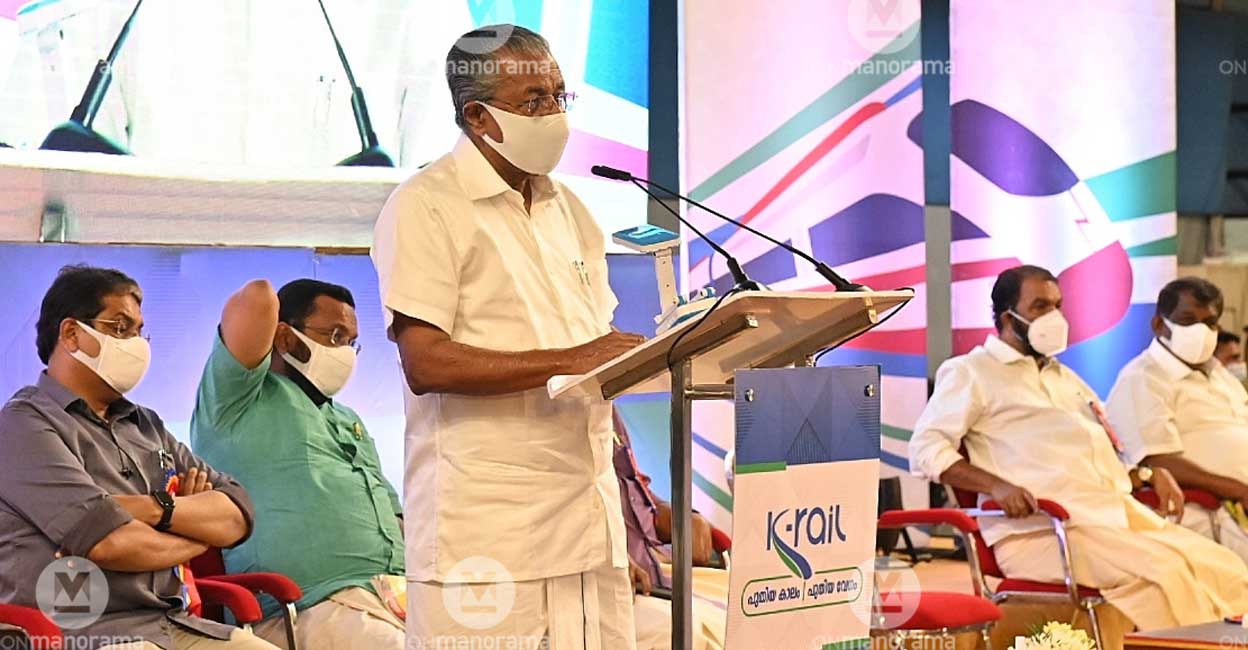Will Silverline partition Kerala into West and East blocs? Here is what the DPR says

Mail This Article
At least one of the big concerns raised about the Semi High-Speed Rail Corridor, Silverline, looks true. In more than half its 532-km stretch, the rail corridor will permanently separate Kerala into west and east regions. The Silverline and the compound wall that would come up on either side will function as an impregnable barrier between the two regions. The proposed wall (2.4 m or 7.87 ft) would be taller than even a sensationally tall basketball player like LeBron James.
This 'partition' aspect of Silverline is revealed in the Detailed Project Report, which the government has eventually decided not to keep under wraps. The Silverline, just like the existing railway line, will be laid at ground level on a slightly raised embankment for nearly 300 km (292.73 km). The entire stretch of the Silverline on embankments, the DPR says, will be protected by a fencing or compound wall.
Neither the LDF government nor the CPM had till now acknowledged the existence of the 'partition wall'. Former industries minister and CPM leader E P Jayarajan had earlier quite rhetorically asked whether the existing railway line, which is also constructed on embankments, had divided Kerala into two.
Jayarajan had presupposed a similarity between the existing line and the semi high-speed line. The difference is speed. The average speed of trains running through Kerala now is 36 km per hour. The top speed allowed, that too for a small section, is 100 km per hour. The trains running on Silverline will, for the most part, run at 200 km per hour.
"As per prevailing practice in the Railways, there is a need of fencing the railway corridor if the speed is more than 160Kmph, particularly from the point of view of local trespassing by people and cattle, which is prevalent in the country," the DPR says in the part where the civil engineering aspects are detailed.

It would be disastrous to let people cross the Silverline like they would a normal rail line that passed behind one's backyard. Here is what the DPR says under the sub-head 'Security of Right of Way': "In view of their long braking distance, it is not possible for a driver to stop trains to avert obstacles within visual range. Therefore, to prevent people and other obstacles from entering the right of way, high-speed railway system is designed as a completely segregated system with grade-separated crossings."
Grade separation means the avoidance of level crossings by making any roads crossing the line either pass under or over the railway on bridges. For this very same reason, there will be no level crossings along the Silverline like in the case of the existing rail network.
Therefore, to ensure the absolute safety of man and animals, the DPR says that the "full length of the proposed corridor is proposed to be installed either with a compound wall of sufficient height or with suitably designed fencing to prevent trespass and consequent damages".
The Silverline compound wall, besides keeping trespassers out, has twin other objectives according to the DPR. It can be used to mount solar panels for sourcing renewable power for the project and also used as billboards to mop up advertisement revenue.
Two of the three compound wall options given in the DPR could cause unease as they are eerily similar to the barbed wire fencing along sensitive international borders. Nonetheless, the DPR advises the government to opt for the normal household compound wall design because only such a design would allow the mounting of solar panels.

So it is clear. Once the Silverline becomes operational, it will be impossible to cross over to the other side. But it is not just the path of man or animals that would be blocked. The free flow of water could also be disrupted in a flood-prone area like Kerala. After the 2018 deluge, floods have become the norm in Kerala.
When such incessant floods are attributed to constructions that impede the flow of rainwater, another permanent structure, cutting longitudinally through Kerala like a north-south Chinese wall, it is feared, could only weaken Kerala's already fragile ecology.
The DPR does not address the issue either. It merely gives a one-line assurance. "The expected impact on topography and geographical features is negligible or small."


